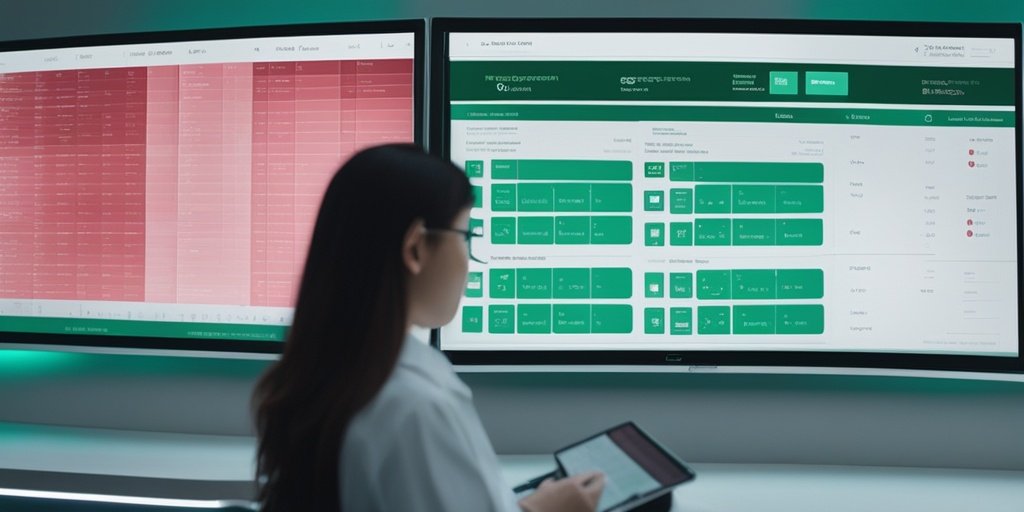⚡ Quick Summary
This study introduces a novel approach using natural language processing to automate the evaluation of antibiotic prescribing guidelines in pediatric sinusitis clinical notes. The model achieved a remarkable 94.7% accuracy in identifying appropriate prescriptions, highlighting its potential for improving antibiotic stewardship.
🔍 Key Details
- 📊 Dataset: 300 clinical notes from pediatric patients
- 🧩 Features used: Clinical notes from EHR
- ⚙️ Technology: Generative models, including Llama 3.1 405B-instruct
- 🏆 Performance: 94.7% accuracy for appropriate prescriptions
🔑 Key Takeaways
- 📊 Antibiotic over-prescription is a significant public health concern, especially in pediatric sinusitis.
- 💡 Natural language processing can automate the evaluation of clinical notes, reducing the need for manual reviews.
- 👩🔬 The study utilized advanced techniques like few-shot learning and chain-of-thought prompting.
- 🏆 The Llama 3.1 405B-instruct model demonstrated superior performance in classifying prescription appropriateness.
- 🤖 Challenges included vague documentation, which affected the model’s accuracy.
- 🌍 The findings could significantly enhance real-time decision-making in pediatric care.
- 🆔 Study conducted at the Children’s Hospital of Philadelphia network.

📚 Background
The over-prescription of antibiotics, particularly in children with sinusitis, poses a serious threat to public health. Distinguishing between bacterial and viral infections based solely on clinical symptoms can be challenging, leading to unnecessary antibiotic use. This study aims to address this issue by leveraging natural language processing to automate the evaluation of antibiotic prescriptions in clinical notes.
🗒️ Study
Conducted within the Children’s Hospital of Philadelphia network, this study focused on developing a generative model to assess the appropriateness of antibiotic prescriptions in pediatric patients diagnosed with sinusitis. The researchers analyzed 300 clinical notes, employing techniques such as few-shot learning and chain-of-thought prompting to refine their model.
📈 Results
The generative model achieved an impressive 94.7% accuracy in identifying appropriate antibiotic prescriptions from the clinical notes. However, it struggled with 15 notes that were poorly documented, indicating a need for clearer clinical documentation to enhance model performance. The results suggest that while the model is effective, there are still areas for improvement.
🌍 Impact and Implications
The implications of this study are profound. By integrating such a model into electronic health records (EHR), healthcare providers could receive real-time assistance in prescribing antibiotics, ensuring adherence to guidelines and improving patient outcomes. This advancement could play a crucial role in combating antibiotic resistance and promoting better antibiotic stewardship on a larger scale.
🔮 Conclusion
This study highlights the potential of natural language processing in transforming the evaluation of antibiotic prescriptions in pediatric care. With a high level of accuracy, the generative model could serve as a valuable tool for clinicians, aiding in the appropriate use of antibiotics and ultimately enhancing patient care. Continued research and development in this area are essential for maximizing the benefits of AI in healthcare.
💬 Your comments
What are your thoughts on the use of AI in evaluating antibiotic prescriptions? We would love to hear your insights! 💬 Share your comments below or connect with us on social media:
Automated Evaluation of Antibiotic Prescribing Guideline Concordance in Pediatric Sinusitis Clinical Notes.
Abstract
BACKGROUND: Ensuring antibiotics are prescribed only when necessary is crucial for maintaining their effectiveness and is a key focus of public health initiatives worldwide. In cases of sinusitis, among the most common reasons for antibiotic prescriptions in children, healthcare providers must distinguish between bacterial and viral causes based on clinical signs and symptoms. However, due to the overlap between symptoms of acute sinusitis and viral upper respiratory infections, antibiotics are often over-prescribed.
OBJECTIVES: Currently, there are no electronic health record (EHR)-based methods, such as lab tests or ICD-10 codes, to retroactively assess the appropriateness of prescriptions for sinusitis, making manual chart reviews the only available method for evaluation, which is time-intensive and not feasible at a large scale. In this study, we propose using natural language processing to automate this assessment.
METHODS: We developed, trained, and evaluated generative models to classify the appropriateness of antibiotic prescriptions in 300 clinical notes from pediatric patients with sinusitis seen at a primary care practice in the Children’s Hospital of Philadelphia network. We utilized standard prompt engineering techniques, including few-shot learning and chain-of-thought prompting, to refine an initial prompt. Additionally, we employed Parameter-Efficient Fine-Tuning to train a medium-sized generative model Llama 3 70B-instruct.
RESULTS: While parameter-efficient fine-tuning did not enhance performance, the combination of few-shot learning and chain-of-thought prompting proved beneficial. Our best results were achieved using the largest generative model publicly available to date, the Llama 3.1 405B-instruct. On our evaluation set, the model correctly identified 94.7% of the 152 notes where antibiotic prescription was appropriate and 66.2% of the 83 notes where it was not appropriate. However, 15 notes that were insufficiently, vaguely, or ambiguously documented by physicians posed a challenge to our model, as none were accurately classified.
CONCLUSION: Our generative model demonstrated good performance in the challenging task of chart review. This level of performance may be sufficient for deploying the model within the EHR, where it can assist physicians in real-time to prescribe antibiotics in concordance with the guidelines, or for monitoring antibiotic stewardship on a large scale.
Author: [‘Weissenbacher D’, ‘Dutcher L’, ‘Boustany M’, ‘Cressman L’, “O’Connor K”, ‘Hamilton KW’, ‘Gerber J’, ‘Grundmeier R’, ‘Gonzalez-Hernandez G’]
Journal: Pac Symp Biocomput
Citation: Weissenbacher D, et al. Automated Evaluation of Antibiotic Prescribing Guideline Concordance in Pediatric Sinusitis Clinical Notes. Automated Evaluation of Antibiotic Prescribing Guideline Concordance in Pediatric Sinusitis Clinical Notes. 2025; 30:138-153.